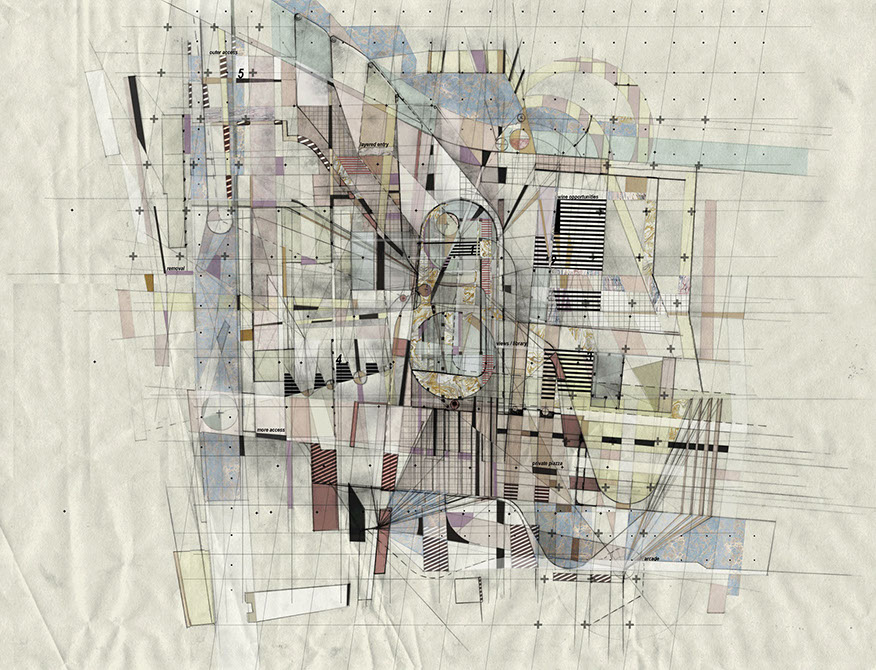
Mapping Analysis
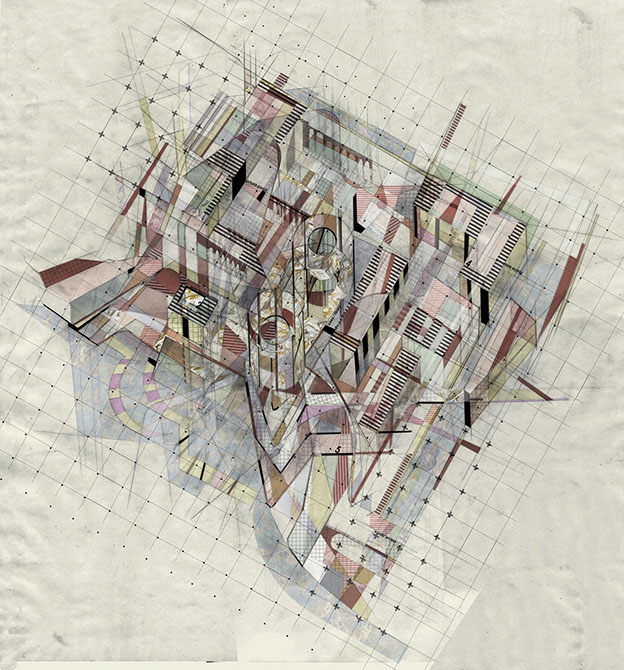
Encapsulating the Venetian Archives
Axonometric Mapping
Venice, Italy - Working at the site of two former gasometers, seemingly alien to their Venetian Context, the two vessels, block public access between vital cultural institutions along the "Fundamenta" in Venice. The towering structures, walled off, bar quick access to an adjacent convent, Palladian Church and strong links to open water access to the Venetian Lagoon. Examining these confines in the greater context of Venice and being aware of the diminishing cultural identity due to touristic business ventures, helped to create a specific filter for the reuse of these gasometers. Time, traffic, and identity guide analysis on the site through a series of critical drawings interrogating movement in the past fifty years, decade by decade, the next fifty years, decade by decade, and their ligature, one hundred years from now. By defining movement not just through public traces, intersections and spatial discoveries are recorded as overlapping, boundless additions to an occupants renewed journey through the gasometers. The following series analyze these parameters while providing visual data as subconscious clues to contextualizing the site. The documents archive a palimpsest of information that, would provide clues to the vestige of this area if Venice were to potentially flood. With this, the project inspects the prospect of a future flooding, imagining these introductory drawings a map of below water Venice.
Graduate Design Level Three, University of Florida
Instructor(s); William Tilson
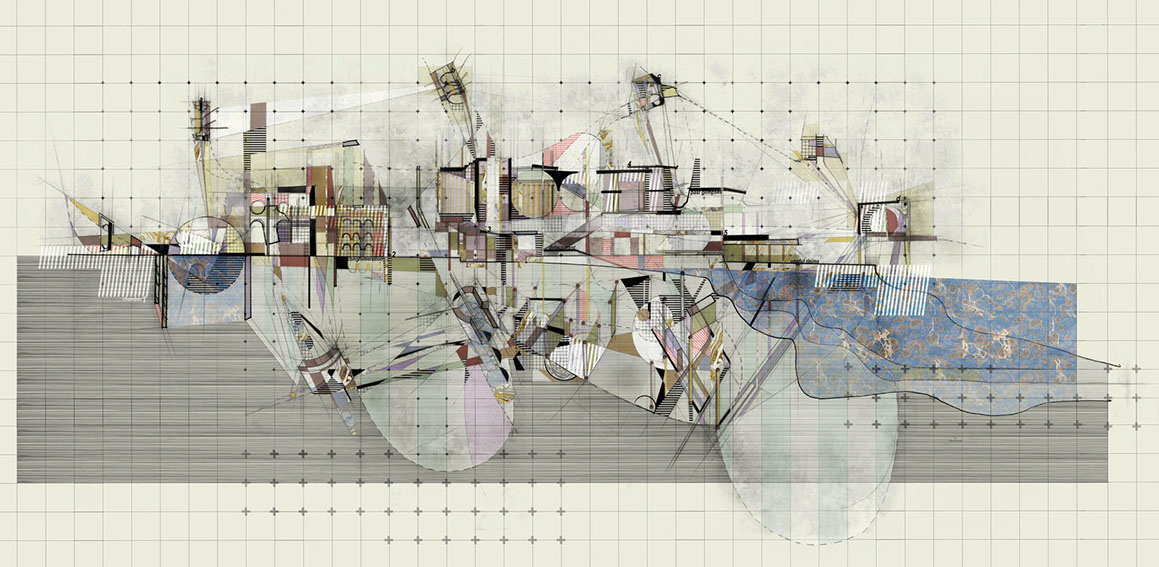
Section Analysis looking north
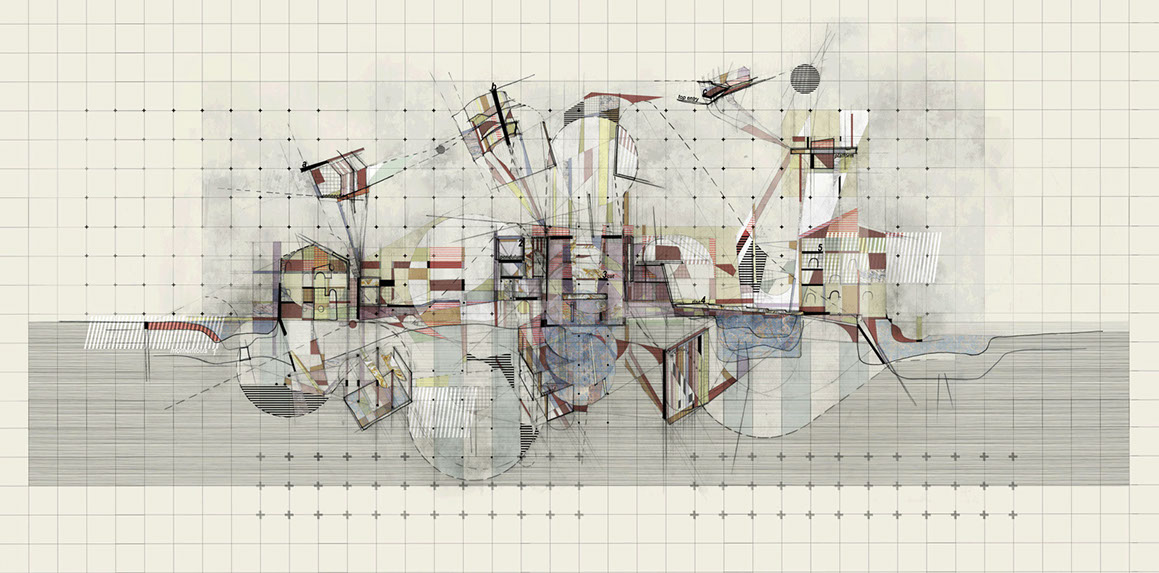
Section Analysis looking south
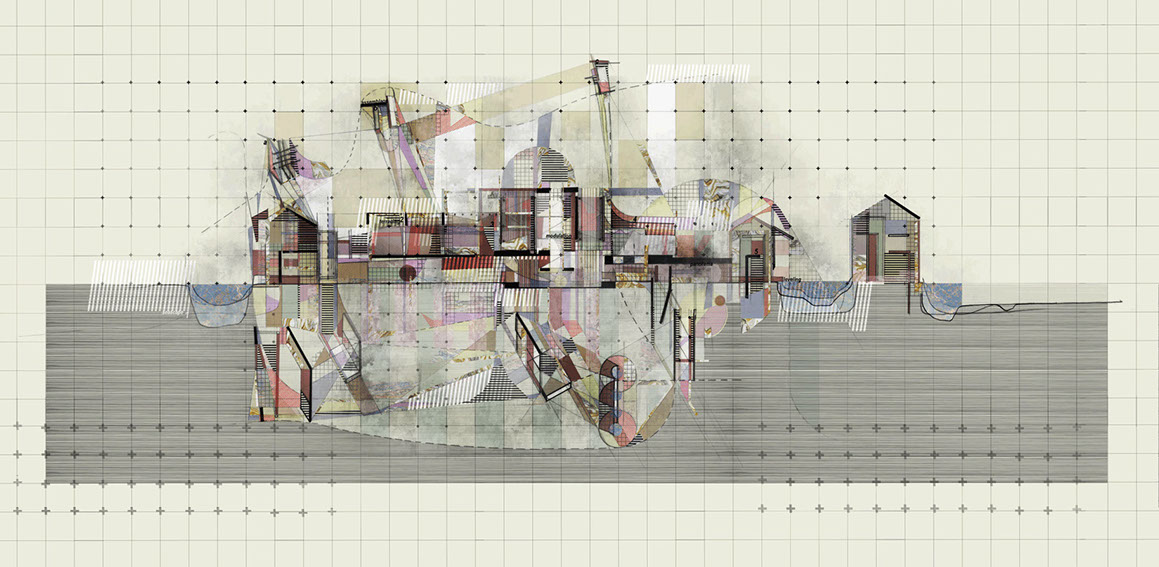
Section Analysis looking west
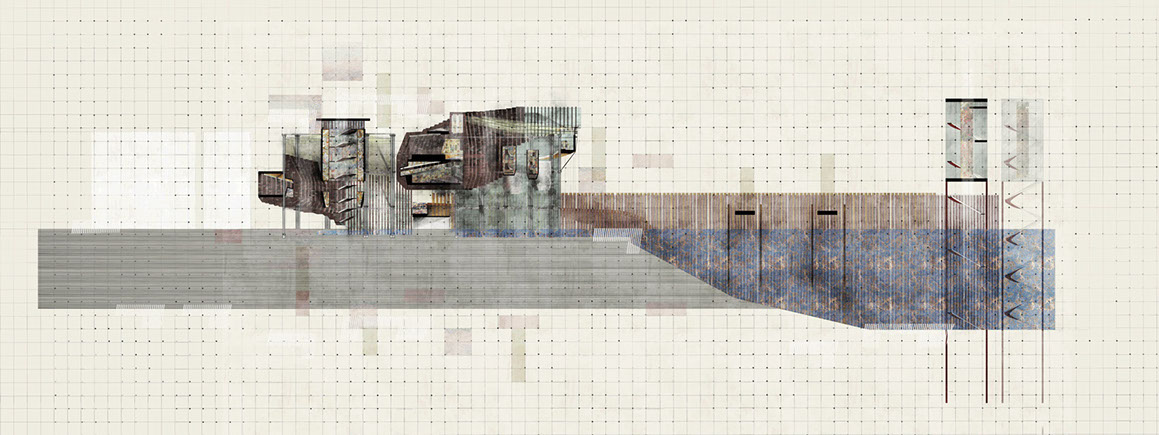
Section looking north
Aiming to strategically understand that the removal, accurate archiving and transportation of a variety of priceless artifacts and relics in the city could be impossible in the event of a flooding, constructing an archive that could exist pre and post flood summon a vital function to the gasometers. If these dual conditions were to exist, they would place themselves on polarizing ends of a time line. The Venetian Archive would need to withstand time and weather, providing protection to it's collections. Cautiously constructing architectural ligaments that bandage these conditions and events fastening to the existing structure, the archive supports a series of capsules accessed by a ramp. The ramp is ascended in current day use, and descended
in the future to be accessed by boat. The curated concern for these conditions to prevail, grant the beginning of preparation for detrimental events without indigenous artifact displacement. Because this happens in modern day, the archive serves as a cultural institution to the city aimed at local curatorial duty.
This precise programming translates to the description of the past through the architecture of the internal capsules. Contextual materials such as Venetian plaster, coat floating capsules that are offset from the perimeter of the gasometer. The surrounding ramps are paced with reused bricks from old structures in the region. Light fabrics at the top of the archive serve as protective screens for the harmonizing and cultivation of these filters.
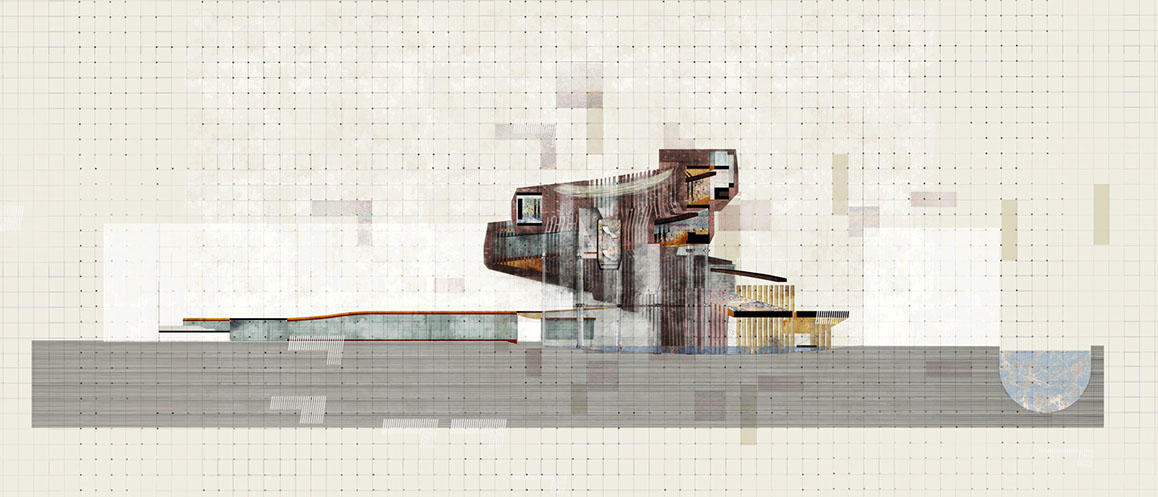
Section looking west
Visioning brick as the main external wrapping for the gasometer , supporting the ramps, the material palette reclaims familiar images and memories of the city. Internal components mirror the delicate traces of detail and process found before weathering and degradation.
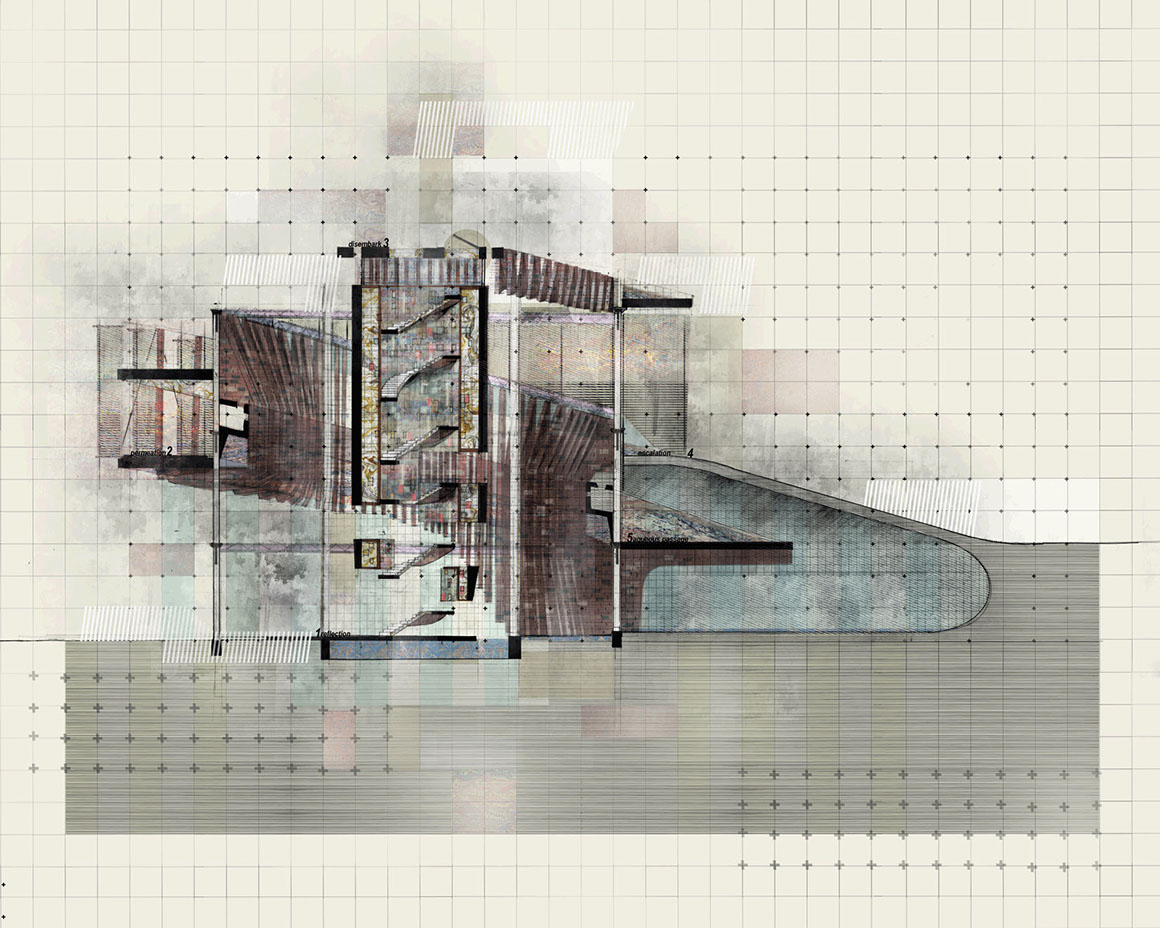
Section looking west
Johnathon Smith. All Rights Reserved. With proper credit, drawings may be re-posted, Work may not be printed, modified, re-branded or re-distributed without permission.
Buy Prints
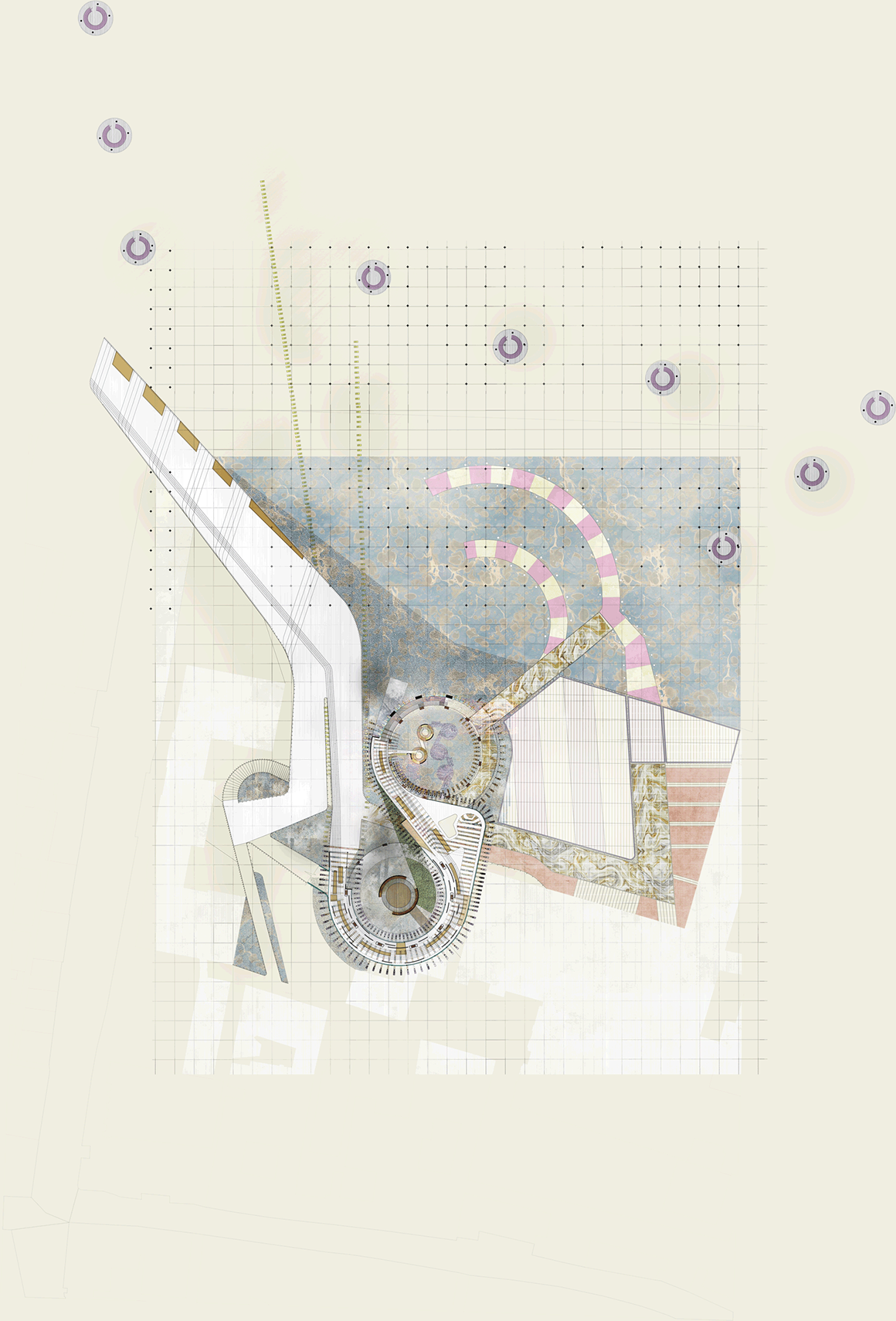
Floor Plan Level One
Fundamenta
Pool
Capsules
Ramp to Library
Viewing
Capsule
Wine Garden
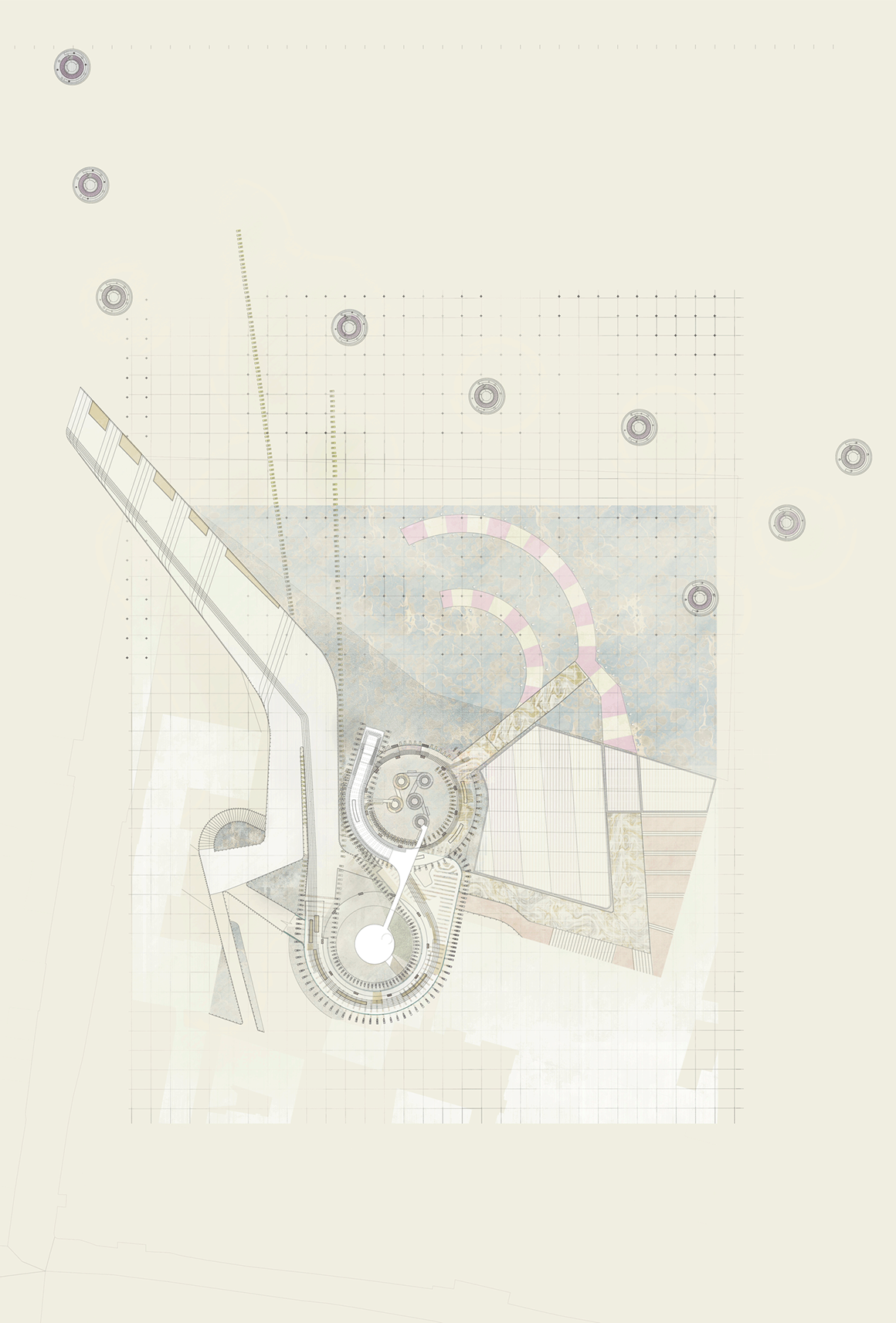
Main Capsule
Satellite Archives
Floor Plan Level Two
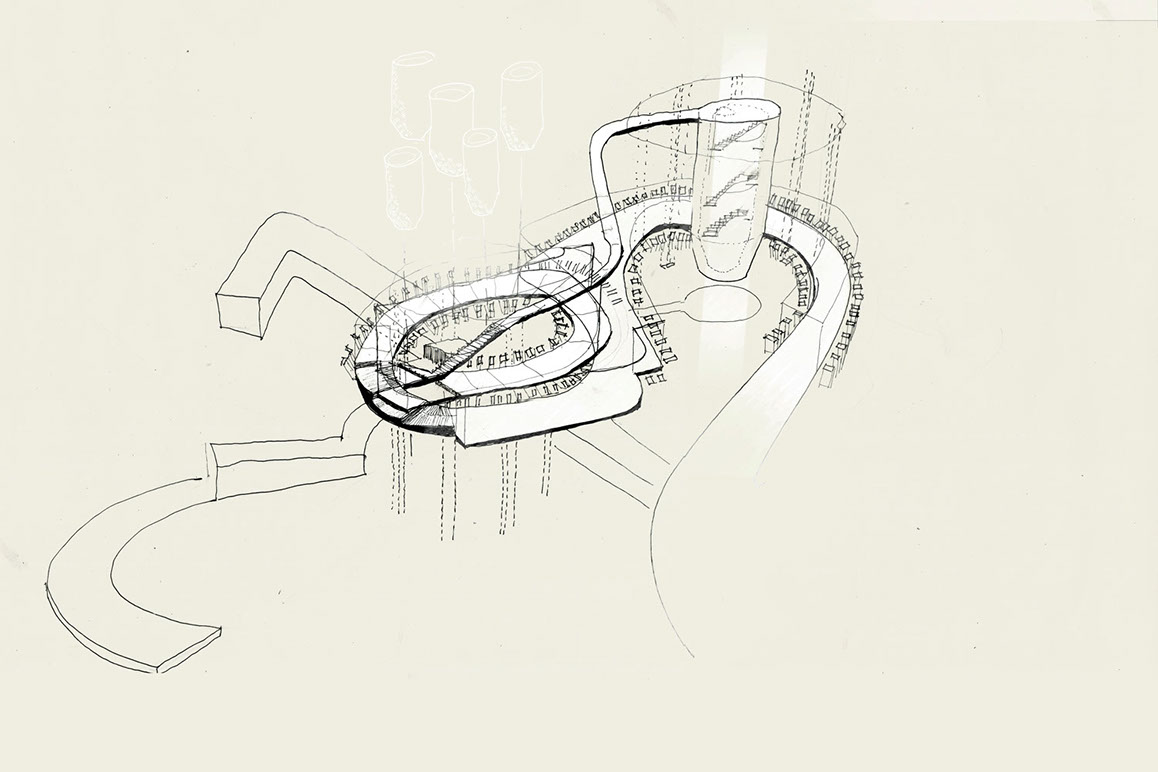
Axonometric
Main Capsule
Ramp to Main Capsule
Ramp to Archive
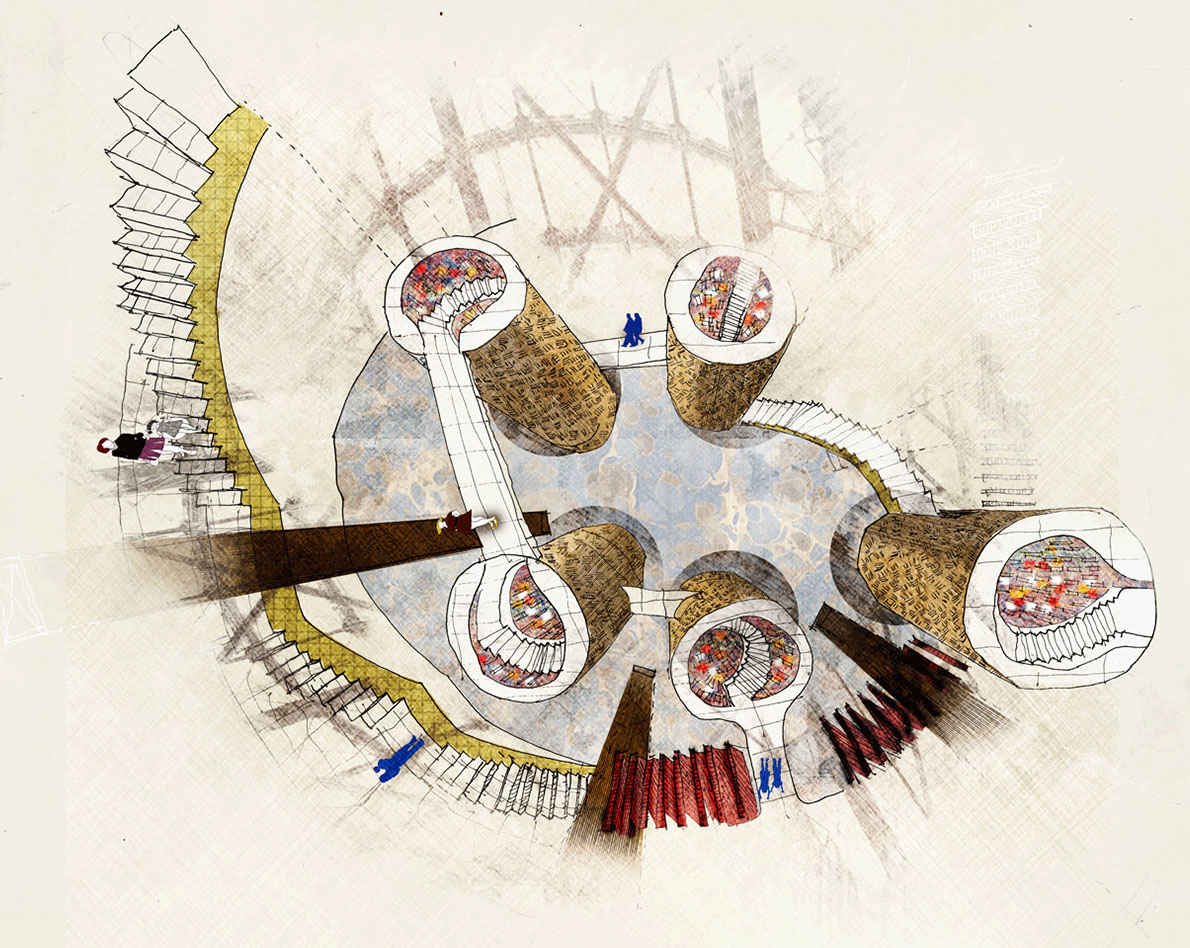
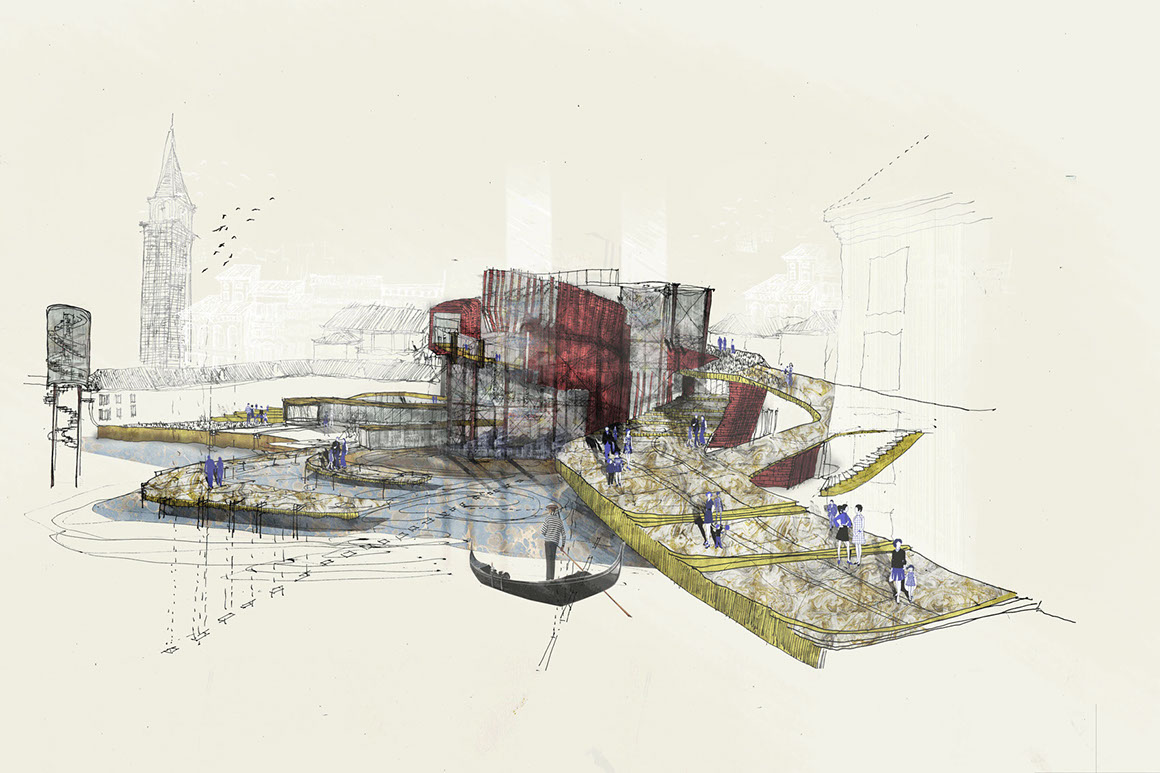
Archive from the water
Capsule Grouping Gasometer Two,
Ascension through Capsules
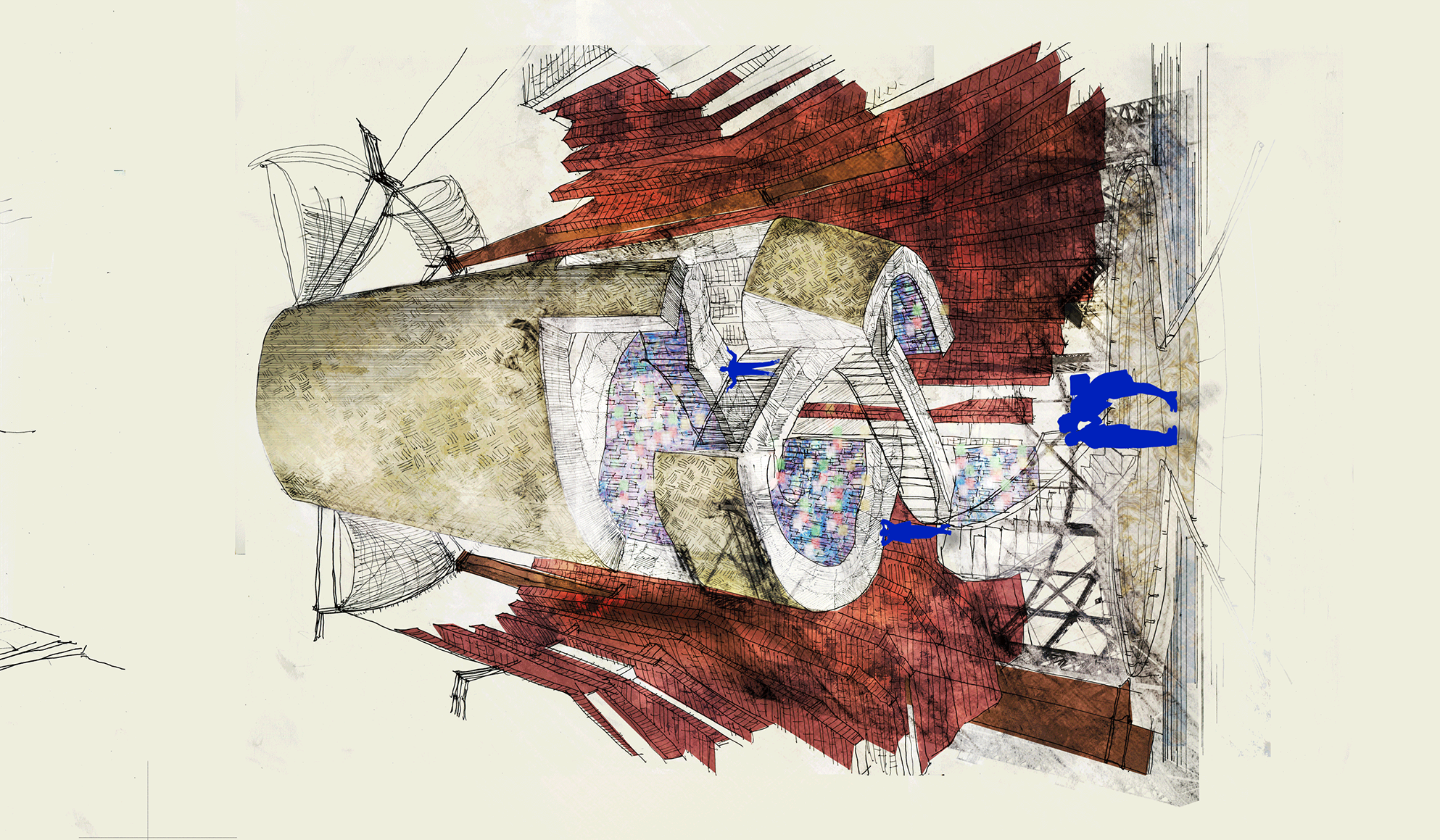
Main Capsule; Movement from top to bottom
Encapsulating Archives of the city requires policies of organization in order to store and protect these histories accurately. By placing “capsules within the capsules”, annexation and sectioning of items is practiced through miniature, floating libraries weaving in and out of each other . With subliminal external, material qualities (Venetian Plaster and Gold Leaf), light refractions and diffusions glorify a venture through the re-purposed spaces. Here, one can learn, reflect, and connect to the past.